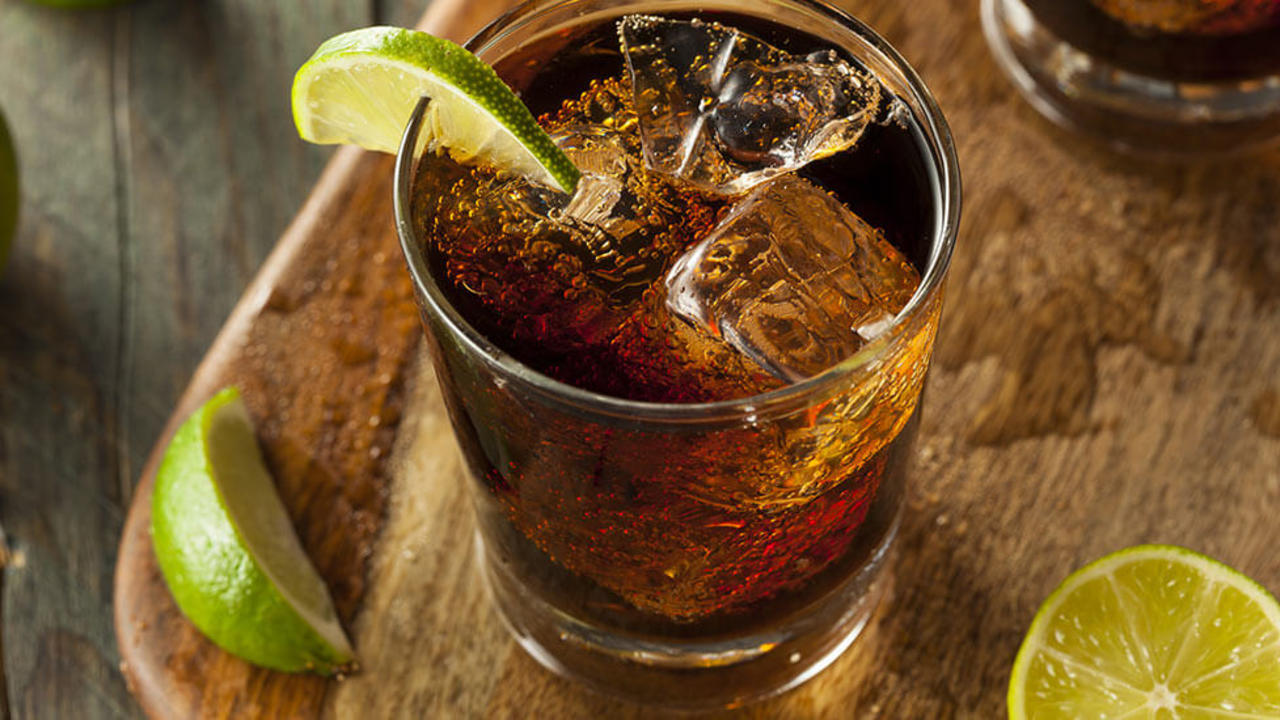Scotch whisky, the water of life, is more than just a drink. It’s Scotland’s most famous export and arguably as iconic as haggis, kilts, and perhaps even The Proclaimers.
Made from malted barley and then distilled in recycled oak barrels for at least three years (and one day), there’s heritage and history in every drop.
Whether you’re sipping a single malt straight, having it on the rocks, in a cocktail, or even just with with coca cola, anyone can enjoy whisky, in almost any setting. Today, you can find thousands of varieties of whisky and price points ranging from a few pounds a glass to a few thousand.
So, how did scotch become a booming global trade worth billions of pounds?
If you are an avid whisky lover and would like more information on our exclusive partnership with Glenfiddich, click here.
A Brief History of Scotch Whisky: From Moonshine to Magic
Whisky is a slow drink. It’s slow in its history and slow in its drinking. So, let’s take a trip back in time to see how it has evolved.
Scottish distilleries have been producing barrels of whisky since the early 15th century. Records show that even royalty liked a wee dram; back in 1494 King James IV of Scotland sent a large consignment of malt to a Scottish friar to make what he called “aquavitae” (or whisky to the rest of us).
Of course, it wasn’t just the nobility who enjoyed a tipple, the drink quickly began to grow in popularity. This was partly thanks to some cool indie monks who made their living distilling it around the country.
Inevitably, being such a well-loved drink, whisky didn’t stay put for long. It first spread to England and Ireland, where the Bushmills distillery was founded, in 1608. It’s still in operation today - making it the oldest distillery in the world.
Then, as people sailed over to America to start a life in the new world, it took up root across the pond too.
Back home, things changed considerably when the Act of Union joined England and Scotland in 1707. The government soon introduced the malt tax, which was a huge burden on the whisky producers of Scotland. To avoid the attention of the tax collectors, people started distilling at night, so the darkness would hide their activities. This is the origin of the word “moonshine”.
Up until about 1830 most whisky was made in small scale pot stills which limited production. Whisky was also sterner stuff with a hot and fiery quality and often not that enjoyable. A former taxman and ingenious inventor called Aeneas Coffey came to the rescue and created a new type of still that allowed grain whisky to be produced on a much larger scale. Grain whisky differs from malt whisky in that it’s made from a combination of malted barley, corn, wheat or rye, rather than only malted barley.
Mixing well with traditional malt whisky, the resulting blend is lighter, smoother, and much more palatable for the average person.
Later, partly thanks to Coffey’s invention and its newly refined character, blended whisky’s popularity really exploded. Carried across the world by soldiers and merchants during the height of the British Empire in the mid-19th century. It became popular in countries as far and wide as Japan, India, and South Africa.
Soon locals were producing it themselves, giving rise to the huge array of whisky (and whiskey) we have today; from Irish whiskey, American Bourbon and Tennessee straight, to Japanese whisky and Rye whiskeys. As you might expect, each type has its own qualities, flavours, distinctions, and dash of local flair.
Wait, is it Whisky or Whiskey?
Actually, it’s both! It’s generally accepted that whisky from Scotland is spelled without an ‘e’ and whiskey from Ireland and the US has one. Japanese whisky making follows the Scottish tradition and so drops the ‘e’ too.
But why the difference in spelling? Consensus is that whisky comes come from the Gaelic word uisce, which means “water”.
Both Scottish and Irish transliterations of the word were slightly different, so while the spelling has changed over the years, really the difference in spelling is nothing more than convention.
Know Your Stuff: Single Malts, Grain Whisky and Blended Whisky
Single malt whiskies are produced by individual distilleries and only contain one variety of malted barley. It’s distilled twice using pot stills and aged in oak barrels, which give it a rich woody colour and infuse it with unique flavours. The characteristics of each single malt whisky will change considerably depending on the water and malt, the barrels, the peat, the land and the distillation process, and length of maturation.
Grain whisky can be made from a number of different cereal crops including rye, corn wheat, and malted barley. It tends to be stronger, smoother, but less flavoursome than single malt whiskies, and is often used to make blended whiskies as a result.
Blended whisky is made when single malts and grain whiskies are mixed together to produce a smoother drink. Most mass market whisky brands use blends because it allows them to standardise character and flavour notes. It takes a great deal of expertise and the nose of a master distiller to match flavour combinations from dozens of different single malts and grain whiskies to create a recognisable final product.
A License to Distill: How Whisky is Made
Nose a glass of scotch and you’re not just sniffing some alcohol, you’re experiencing hundreds of years of tradition. While every distillery has its own way of doing things, it’s a relatively simple drink to make and the process remains much the same.
Making Scotch: The Process
The first step to making scotch is to malt the barley. It’s soaked and dried a number of times and laid out on the floor to germinate.
Once the little green sprouts are showing (and long before a full blown barley crop has grown in the shed), it’s dried in a kiln (oven). At this point, peat can be added to the fire to include a smokey quality to the spirit.
The kiln stops the germination and the roasted grain is ground up and made into a powder called grist. This is then mixed with hot water in a large heater called a mash tun. Once the starch in the grain has broken down, the whisky makers are left with a liquid called wort.
Next, the wort is poured into a big vat called a washback. Yeast is added to start the fermentation process and it bubbles away like a witches’ cauldron, creating alcohol.
This liquid - now called the wash - is distilled twice. This takes two copper stills; the wash still and the spirit still.
The wash still heats and vaporises the alcohol, which is then carried to the spirit still. At this point the spirit is called low wines.
The spirit still distills the alcohol further. The resulting spirit is then poured into oak barrels to mature.
In Scotland, there are some very strict rules governing whisky making. Some of the key points are that the spirit must be matured for a minimum of three years and one day in a charred oak barrel, and of course - that it must be made in Scotland.
Scottish Whiskies
Here are the five main whisky making regions in Scotland.
Highlands and Speyside Whisky
The highlands region produces excellent single malt whisky that’s almost as varied as its scenery. There’s something to suit all tastes including aged whiskies that are sweet, smoky, floral, and even a touch salty.
There are dozens of renowned distilleries in the highlands. Glengoyne distillery, for example was founded in 1833 just north of Glasgow in Dumgoyne. It produces unpeated whisky with complex, bold flavours.
Speyside, an annex of the highlands, is in northeastern Scotland. Again, there are dozens of Speyside distilleries and the region produces a large number of single malts.
Strathisla is one of the most famous, being the longest running distillery in Scotland (founded in 1786). It produces a sublime single malt that is also used as the main component of the Chivas Regal Blend.
Lowlands Whisky
There are currently only six operational whisky distilleries in the Scottish lowlands - and today this region is mostly known for producing whisky to be used in blends.
However, there are still some good single malts to be found. The Bladnoch distillery, for example produces a highly palatable whisky. The furthest south of all the Scottish distilleries, it was founded on the banks of the Bladnoch river near Wigtown by the McClelland family, in 1817. With a few ups and downs and some temporary closures, it’s now operational, producing a limited supply of its fruity single malt.
Campbeltown Whisky
Campbeltown is located in southwest Scotland and was once the beating heart of whisky production. Still famous for peaty, slightly salty, and smoky single malts you can find a range of full-bodied varieties.
This region is also home to the oldest independent whisky producer in Scotland, the Springbank distillery, which was founded in 1828. With three different malts, it produces a range of whiskies with maturation times ranging from 10 years to 21 years.
Islands Whisky
The Scottish islands produce an array of peaty single malts. These distilleries are based on Arran, Lewis, Skye, Mull, Orkney, Arran, and Jura, and the characteristics of each whisky can vary considerably.
The Arran Distillery for example, was founded relatively recently (1994) and produces a single malt that is also used in blended varieties.
Islay Whisky
Quite literally an island unto itself, Islay is in the west of Scotland and has a number of distinguished distilleries. With dry, smoky, strong characters, Islay whiskies are often said to be quite fiery - you’ll also notice a coastal influence as some have a salty, even seaweedy characteristic.
Over 200 years old, the Laphroaig distillery on Islay producers a distinctive example of a Single Malt Scotch Whisky. Rich, peaty, and downright rustic, it has both fans and detractors, but we certainly think it deserves a mention!

